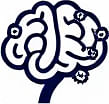The Feynman Technique: A Practical Tool for Deep Learning
 by Max Miller
by Max Miller
The Feynman Technique offers a straightforward way to master complex ideas by explaining them simply. This method enhances retention and clarity, making it ideal for professionals and learners in psychology and business strategies. Discover its steps and applications for better cognitive development.
The Feynman Technique is a method that helps individuals grasp difficult concepts by breaking them down into simple explanations. This approach draws from the work of physicist Richard Feynman, who used it to solidify his own knowledge.
Origins of the Feynman Technique
Feynman developed this technique during his career, relying on it to explain intricate scientific theories. By pretending to teach others, he identified gaps in his own comprehension. This process turned abstract ideas into accessible ones, fostering better retention.
Steps to Apply the Feynman Technique
To use this method effectively, follow these key steps:
- First, select a concept you want to understand and write it down as if you are explaining it to a beginner.
- Next, use simple language to describe the idea, avoiding jargon where possible.
- Then, identify any areas where your explanation falters, indicating a need for further study.
- Finally, refine your explanation until it is clear and concise.
These steps encourage active engagement with the material, leading to improved learning outcomes.
Benefits in Cognitive Development
Applying the Feynman Technique can significantly boost memory and problem-solving skills. For instance, in psychology, it aids in internalizing theories by making them relatable. Professionals in business strategies often find it useful for analyzing market trends or decision-making processes.
One advantage is that it promotes critical thinking. By simplifying complex information, individuals can spot flaws in their reasoning more easily. In educational settings, students report higher confidence after using this technique regularly.
Real-World Applications
In psychology, the Feynman Technique helps in exploring human behavior patterns. For example, when studying motivation, one might explain the basics of reward systems in everyday terms. This makes psychological principles more applicable to real life.
In business, it assists with strategic planning. Leaders can use it to break down financial data or operational challenges. By explaining these elements simply, teams can collaborate more effectively and innovate solutions.
Consider a scenario in cognitive development where learners apply this technique to language acquisition. They explain grammatical rules in plain terms, which reinforces their understanding and speeds up progress.
Challenges and Tips for Success
While effective, the technique requires discipline. Some may struggle with initial explanations, revealing deeper knowledge gaps. To overcome this, practice regularly and seek feedback from peers.
For best results, combine it with note-taking or visual aids, though keep the focus on verbal simplicity. Over time, this builds a habit of thorough learning, benefiting long-term growth.
Why It Matters for Lifelong Learners
For curious individuals, the Feynman Technique offers a pathway to continuous improvement. It transforms passive reading into an interactive process, enhancing overall intellectual agility. In fields like psychology and business, where quick adaptation is key, this method provides a reliable tool.
By integrating it into daily routines, learners can tackle new challenges with greater ease. Its emphasis on clarity ensures that knowledge is not just acquired but truly understood, supporting personal and professional advancement.
In summary, the Feynman Technique stands out as a valuable asset for anyone seeking to deepen their expertise. Through consistent application, it paves the way for more effective cognitive development and practical success.
